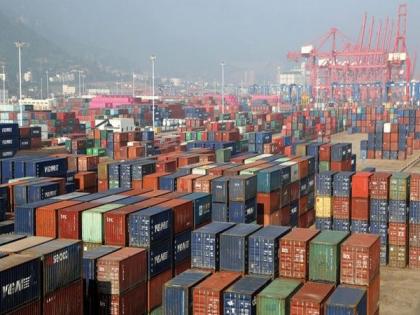Trump imposed lower tariffs on countries for reciprocal benefits in trade and investments: Report
By ANI | Updated: July 31, 2025 23:49 IST2025-07-31T23:44:51+5:302025-07-31T23:49:37+5:30
New Delhi [India], July 31 : The US administration has, in a way, adopted a flexible trade strategy by ...

Trump imposed lower tariffs on countries for reciprocal benefits in trade and investments: Report
New Delhi [India], July 31 : The US administration has, in a way, adopted a flexible trade strategy by offering reduced tariffs to countries that pledge reciprocal benefits such as increased purchases of US goods, removal of trade barriers, or investment in American industries.
Bank of Baroda Economist Aditi Gupta has put out a what she called 'Fact sheet' on US trade deals so far, and the following are the highlights from her compilation.
As the long-feared tariff hikes come into force August 1, the US administration has inked a flurry of trade deals. Several nations, including the UK, Indonesia, Japan, and EU, successfully negotiated lower tariff rates than initially threatened.
The UK secured a 10% reciprocal tariff in exchange for opening its market to US agricultural exports and easing non-tariff barriers on manufacturing goods.
Indonesia saw its tariffs slashed from 32% to 19%, following commitments to eliminate nearly all tariffs on US products and purchase USD 22.7 billion worth of US goods.
Japan's tariff was reduced to 15% from a planned 24%, in return for a reportedly USD 500 billion investment in US industrial sectors and increased imports of American agricultural and aviation products.
Similarly, the EU negotiated a 15% rate instead of a proposed 30%, while agreeing to buy USD 750 billion in US energy and invest USD 600 billion in the US over three years.
Emerging markets such as Vietnam and the Philippines also benefited, with Vietnam's tariff cut to 20% from 46%, and the Philippines receiving duty-free access for US goods. In return, these countries offered improved access and reduced duties for American exports.
The United Kingdom was the first major economy to ink a deal with the US on May 8, 2025. Termed the Economic Prosperity Deal (EPD), it retained the 10% reciprocal tariff but offered targeted relief. The US gained improved access to UK markets for agricultural exports worth up to USD 5 billion, including ethanol.
In return, the UK received exemptions on auto tariffs for up to 100,000 vehicles annually and no tariffs on certain aerospace exports. Discussions on steel, aluminum, and pharma tariffs remain ongoing.
Indonesia's deal, finalized on July 22, saw a rollback in tariffs from 32% to 19% for its exports, while the country committed to eliminating tariffs on 99% of US imports. The deal also includes a massive USD 22.7 billion in US product purchases.
Just a day later, Japan concluded its Strategic Trade and Investment Agreement, settling on a 15% tariffdown from a proposed 24%.
In return, Japan is said to have pledged a staggering USD 500 billion investment in US industries, besides increasing imports of US agricultural and aviation products.
On July 28, the EU reached a trade deal with the US. EU goods now face a 15% tariff, lower than the threatened 30%.
In exchange, the EU agreed to purchase USD 750 billion in US energy and invest USD 600 billion over three years. The deal also offers the US zero-tariff access for industrial goods. However, the punitive 50% tariff on steel and aluminum remains intact.
The US also had deals with Vietnam, the Philippines, and South Korea. Vietnam's tariff was cut from 46% to 20%, with zero tariffs on US exports.
The Philippines received similar duty-free access for the US, while South Korea committed to a USD 350 billion investment and accepted a 15% tariff on its exports.
Based on the deals announced so far, the Bank of Baroda economist asserted that it does seem that the US has adopted a softer stance in trade negotiations with respect to the agreed tariff rate.
"For most nations, the tariff rate agreed is lower than the rate threatened during the Liberation Day announcement. The focus of the US government continues to be on improving market access for US agricultural and energy exports," the economist noted.
She concluded that while trade agreements with developed economies also include an investment commitment, for emerging market countries, the focus is majorly on increasing market access for US goods.
"While advanced economies will adjust to the new tariff rates through cost optimization, for emerging market tariff differentials will play an important role in ensuring that their exports remain competitive," Aditi Gupta concluded.
Disclaimer: This post has been auto-published from an agency feed without any modifications to the text and has not been reviewed by an editor
Open in app